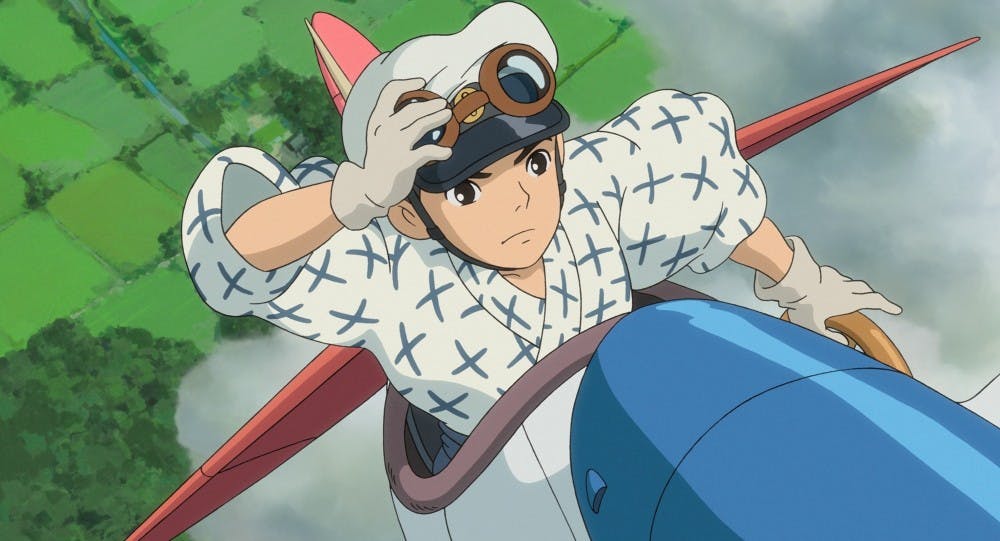Oscar nominee a beautiful ode to flight, yet morally contemplative
The Oscar-nominated animated drama “The Wind Rises” is supposedly Hayao Miyazaki’s final film. He says he is retiring, although he has said this numerous times before.
This hand-drawn animated film begins with a young Jiro Horikoshi dreaming of majestic airplanes soaring through the sky. Even in his dreams as a child, Jiro desires to make aircrafts because he considers them a beautiful dream. For man to rise off the ground, glide across the sky and grace the clouds should be an act of beauty and serenity, not a means of destruction during war.
Early in his life, while on a train, he witnesses a major earthquake that rips through Honshū. Jiro helps a young woman named Nahoko and her mother, who has injured her leg. He meets this woman again later in life, and they marry.
The earthquake causes the houses and roads in the city to rise and fall as if the land were a quilt being tossed up in the air in a wave. The sudden violent shaking and upheaval of the ground causes power lines to collapse and start fires.
This brief but massively destructive event, based on the actual Great Kanto Earthquake of 1923, is perfectly rendered in Miyazaki’s hand-drawn animation. The shapes and lines of animation move free and lively. The landscape warps in the natural disaster, and the drawings on screen feel animated, meaning the imagery moves in such a manner that it makes the audience aware of the crafted moving pictures.
The often simple, but nonetheless detailed style of animation expands, contracts, sways and billows in a slightly slower rate than precise computer animation. Hand-drawn animation, especially Miyazaki’s, has a pulse and vitality to it that even the most astonishing computer animation lacks.
Jiro makes a career out of designing airplanes for the Japanese military. He revolutionizes aircrafts because his head is in the clouds looking into the future and not facing the harsh reality of what his machines will be used for. His vision is only to improve and expand the possibilities of aviation.
Miyazaki lets the audience question Jiro’s actions without taking a firm stance. Clearly a pacifist, Miyazaki still makes one ponder the effects of what Jiro has created. He does not give easy answers.
While not as beguilingly original or strange as his masterpiece, “Spirited Away,” or as kid-friendly as “Kiki’s Delivery Service” or “Ponyo,” “The Wind Rises” is an often conventional bio-pic of a fictional character who is a composite of multiple real-life inventors.
Some of the film’s most gorgeous sequences depart from a typical narrative, with Jiro interacting with his hero, an Italian airplane designer, in dream sequences. They are able to climb across the tops of planes and understand each other, even though they speak different languages in reality.
The scenery and colors throughout the entire film are sumptuous and mesmerizing. It is a feast for the eyes while also stimulating the mind.
If this is indeed Miyazaki’s final film, he is soaring off on a high note.

